🏛 History of Gujarat: 4000 Years of Culture & Legacy
Gujarat, took along the Western coastline of India is more than just a state — it’s a vibrant story of civilizations, cultures, empires, and revolutions. Its history stretches across more than 4000 years carrying the echoes of ancient seafarers, visionary rulers, artists, spiritual leader and freedom fighters. From the bustling trade ports of the Indus Valley Civilization to the powerhouse industry of today Gujarat has always been a land that stood tall — proud of its roots, and progressive in its outlook.
Let’s travel through time and discover Gujarat — a place where history breathes through monuments, traditions and the heart of its people.
🏺 History of Gujarat: Indus Valley Civilizations and Early Urban Marvels
The History of Gujarat begins with one of the world’s oldest urban civilization — The Indus Valley Civilization. Around 2400 BCE several key cities in Gujarat were thriving centers of trade and innovation.
Lothal was one such remarkable city — it had a Highly advanced dockyard, one of the oldest ever discovered, connected to both the Sabarmati River and the Arabian Sea. This shows that even 1000 of years ago Gujarat was playing a crucial role in international maritime trade.
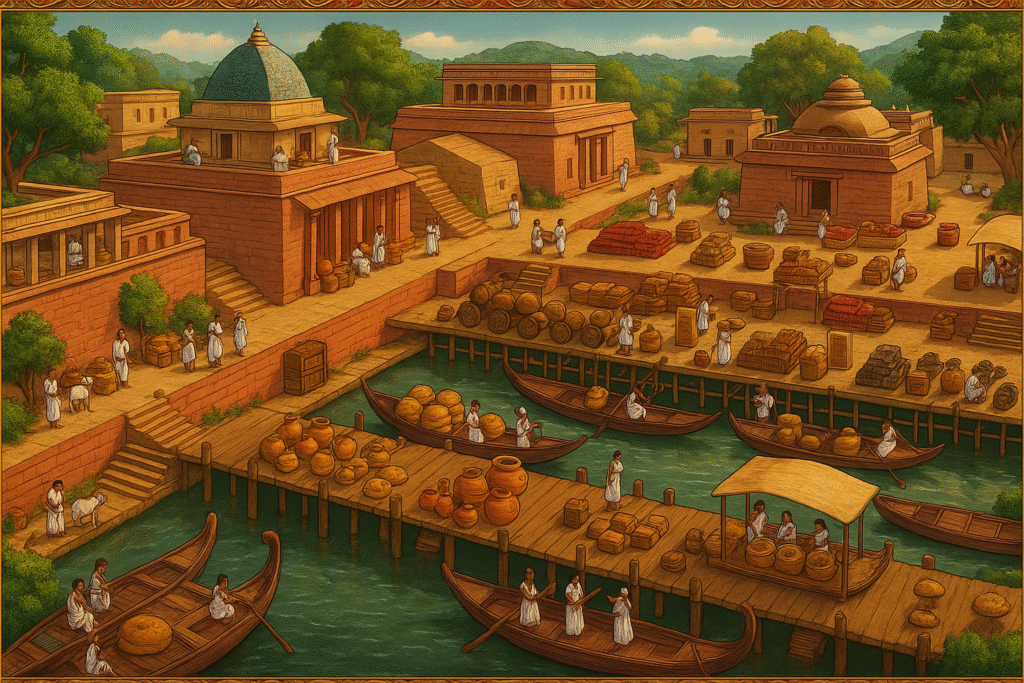
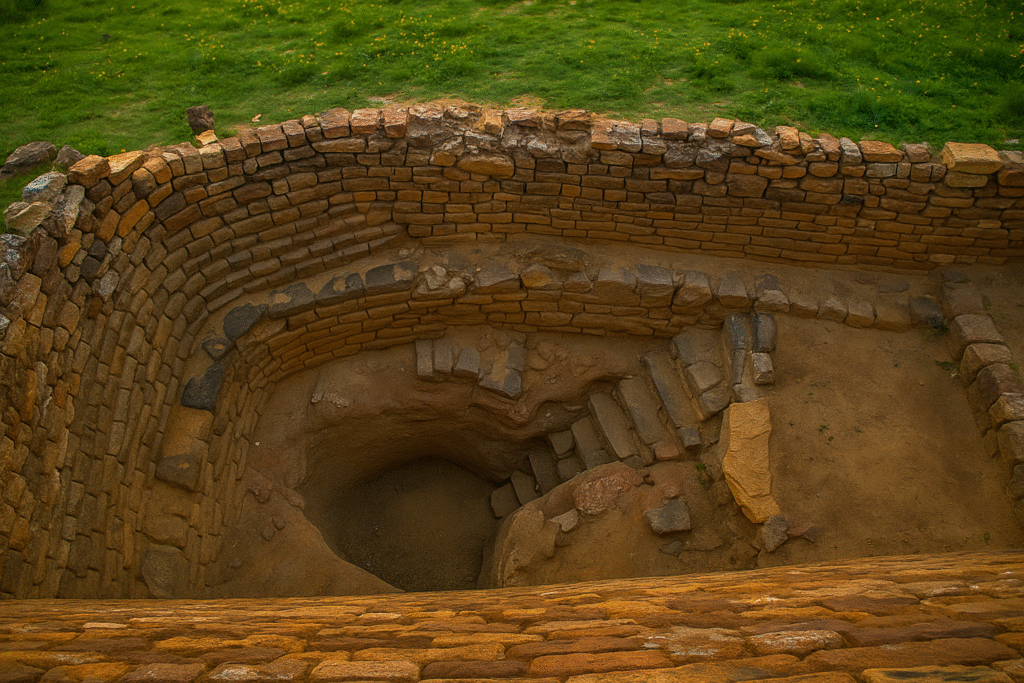
Another jam from this period is Dholavira, located in the run of Kutch. This ancient city was a marvel of engineering and water management. Despite the harsh, arid conditions of the region, Dholavira Add a highly developed system of reservoirs, stepwells. and drainage — showcasing the brilliance of early Gujarati Civilizations.
🏯 History of Gujarat in the Classical and Medieval Period : A Canvas of Kingdom & Culture
After the fall of the Harappan civilization, Gujarat started going through big changes. There were tribal movements, Vedic culture started coming in, and slowly the region became part of bigger empires like the Mauryas and Guptas.
One of the oldest known proofs that Gujarat was under a major empire comes from Emperor Ashoka. His rock edicts found in Junagadh shows that this land was included in the Mauryan Empire, around 250 BCE. This marked an important in the history of Gujarat.
But Gujarat’s real cultural glow-up happened later — during the time of the Solanki (or Chaulukya) Dynasty, between 10th to 13th century. They ruled from a place called Anhilwad Patan and gave Gujarat what we now call a golden period. This time was full of creativity — with amazing temples, poetry, and spiritual energy all around.
Some of their most amazing creations are still standing today. Like the famous Rani Ki Vav (Queen’s Stepwell) in Patan, which is now a UNESCO World Heritage Site, and the beautiful Sun Temple at Modhera. These weren’t just places to pray — they were full of art, science, and meaning.
Also, during the Solanki rule, trade was booming. Gujarat’s ports were super busy with ships coming in and out, and local artists were making fine clothes and crafts — the same kind of art and textile that Gujarat is still loved for even now.
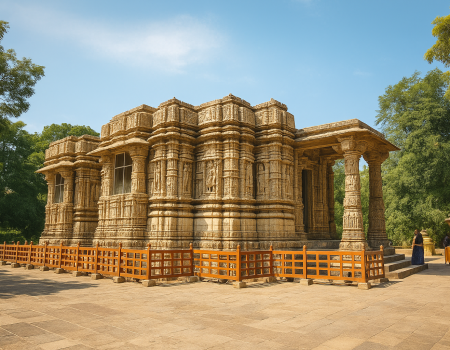
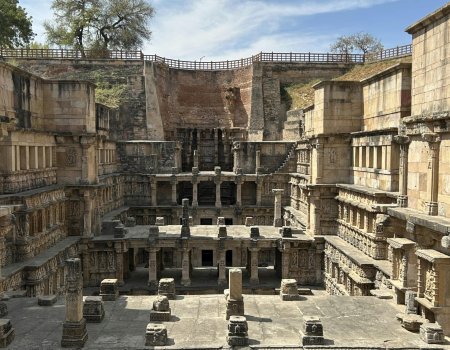
🕌 Sultanate Era in the History of Gujarat : A New Cultural Wave
So, by the 14th century, Gujarat ended up under the Delhi Sultanate. It wasn’t a forever thing though. In 1407, it kinda separated and became its own — the Gujarat Sultanate. That change, honestly, was more than just politics. It started a new phase in the history of Gujarat where Indo-Islamic culture slowly made its place in daily life, art, buildings — basically everywhere.
Then in 1411, Sultan Ahmed Shah came up with the idea of a new city — Ahmedabad. And that wasn’t just another city on the map. It started growing real fast — traders, craftsmen, scholars — all sorts of folks came here. Its location made it easy for people from across Asia to reach, and soon the textile trade started booming. Like, really booming. Ahmedabad became known for it, became important in history of Gujarat.
Now the architecture during this time, it’s something else. You won’t find plain Islamic or only Hindu designs. What they did was mix both — like temple-style carvings with Islamic domes and arches. It worked. You see that in Sidi Saiyyed Mosque (yep, the famous jali one), the Jama Masjid, and even the Adalaj Stepwell. They’re not just monuments, they kinda speak — like they tell how different cultures were okay with blending together, with respect. These structures marks in the architectural history of Gujarat.
Gujarat at that time wasn’t closed off. It welcomed ideas, people, styles — and that’s why this period still feels alive when you visit those places.
🏴 History of Gujrat during British Rule and the Freedom Movement
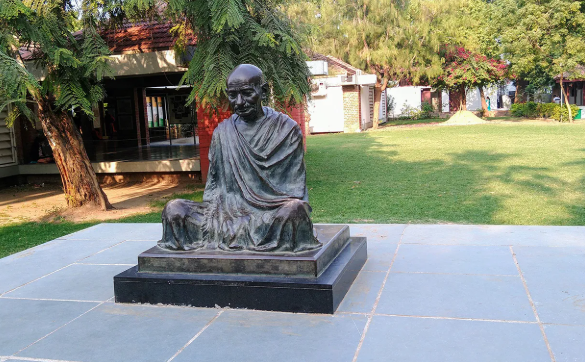
In early 1800s, British East India Company had already took hold over most part of Gujarat. Railways were build, ports were made bigger, and industries came up fast. Cities like Surat and Ahmedabad started changing a lot — but mostly it was to benefit the British, not really for local peoples and became a significant chapter in the history of Gujarat.
But Gujarat didn’t just watch everything happen quietly.
This is the land where Mahatma Gandhi was born — in Porbandar, 1869. Later, he came back to Gujarat and started the Sabarmati Ashram. It wasn’t just his home, but also a place where ideas of peace and revolution was growing. In 1930, Gandhi lead the famous Salt March from here. It was a long walk, around 240 miles, done in peace — but it shaken the whole world and became a turning point in the history of Gujarat
Gujarat also gave many more heroes to the freedom movement. The state become a strong place for reform, protest, and the dream of free India — leaving a powerful legacy in the history of Gujarat.
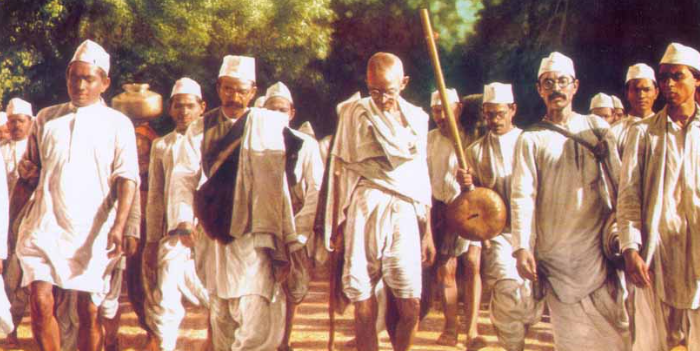
🗳️ Modern History of Gujarat : A New Identify
When India got freedom in 1947, Gujarat wasn’t its own state. It was inside Bombay State, even though peoples here was having different language and culture. Slowly slowly, peoples started realising they need their own identity. Like, something that actually feels theirs and turning point in the history of Gujarat.
Then finally on 1st May 1960, Gujarat become a state. Gandhinagar was made capital, but Ahmedabad still remain the main place for business and also culture things.
After that, Gujarat begin focusing more on own progress — like building factories, schools, roads and all — but still keeping it’s old traditions and culture alive like before and became a proud part of the modern history of Gujarat.
🚀 Gujarat Today: Continuing the Legacy of the History of Gujarat
Business with a Heartbeat
It’s not just big industries — even small businesses and startups are finding their ground here. From local artisans selling Bandhani dupattas to techies setting up IT services in Gandhinagar’s GIFT City — there’s space for everyone. The business environment is actually very supportive. People say “Gujarat ma kaam karvu easy che” — and it’s kinda true.
This modern growth story is deeply connected to the entrepreneurial spirit seen throughout the history of Gujarat.
Roads, Rails & Real Fast Travel
One thing that stands out when you’re in Gujarat — the infrastructure. Roads are solid, cities are well-planned, and even smaller towns feel connected. Plus, with projects like the Bullet Train between Ahmedabad and Mumbai, the state is showing it’s not just dreaming, but doing & legacy of progress seen throughout the history of Gujarat.
Safety & Cleanliness
You’ll hear this a lot — “Gujarat is safe.” Especially for women, people often feel more comfortable here. Cities like Surat and Gandhinagar are known to be among the cleanest in the country too. Not perfect, of course, but definitely better than many places and reflects deep values that have shaped the history of Gujarat.
Education & Healthcare Growing Too
It’s not only business and ports. Education hubs and hospitals are also coming up fast. From good English-medium schools to top colleges and private hospitals, things are improving at ground level. And with more awareness, rural areas are catching up too — continuing a journey of growth rooted in the progressive spirit of the history of Gujarat.
Tourism That Feels Alive
People often think Gujarat is all about business, but travel here and you’ll see how alive it is. Whether it’s the white desert of Kutch, the lions of Gir, or the calm of Dwarka and Somnath — it’s got something for every kind of traveler. And yeah, the food is a whole journey by itself — deeply woven into the cultural and spiritual history of Gujarat.
Learn more about the History of Gujarat from trusted sources like Wikipedia and Gujarat Tourism.
For more on Gujarat’s rich culture, check out our
Discover more about the food click here
